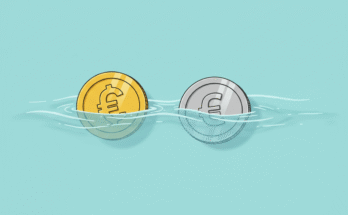Decentralized Finance, or DeFi, has become one of the hottest topics in the blockchain and cryptocurrency world. Promising financial freedom, transparency, and the ability to bypass traditional banks, DeFi has captured the imagination of millions. However, like any emerging technology, it comes with its own set of risks. If you’re considering diving into DeFi, it’s essential to understand these risks so you can protect yourself and your investments.
In this blog post, we’ll break down some of the most common risks associated with DeFi, including hacks, smart contract vulnerabilities, and other potential pitfalls. Don’t worry, we’ll keep it simple and approachable so you can make informed decisions without feeling overwhelmed.
![[Risks of DeFi] Hacks, Smart Contract Bugs, and More](https://mineatech.com/wp-content/uploads/2025/06/risks-of-defi-hacks-smart-contract-bugs-and-more-1024x640.png)
1. Hacks [A Growing Concern]
One of the most significant risks in the DeFi space is hacking. Because DeFi platforms are built on blockchain technology and operate on open-source code, they can be attractive targets for hackers. While transparency is one of DeFi’s greatest strengths, it also means that malicious actors can study the code for vulnerabilities.
Hackers often exploit weak points in decentralized applications (dApps), wallets, or protocols to steal funds. In 2022 alone, billions of dollars were lost to DeFi-related hacks. For example, flash loan attacks where hackers manipulate the price of assets during a transaction, have become a common method of exploitation.
→ How to protect yourself
- Only use well-established DeFi platforms with a proven security track record.
- Avoid storing all your funds on a single platform, diversify your investments.
- Use hardware wallets for added security.
2. Smart Contract Bugs
Smart contracts are the backbone of DeFi. These self-executing contracts automatically enforce agreements between parties without needing a middleman. While this is incredibly innovative, it’s not foolproof.
Smart contracts are written by developers, and like any software code, they can contain bugs or errors. If a bug exists in a smart contract, it can be exploited by hackers or lead to unintended consequences. Once a smart contract is deployed on the blockchain, it’s often immutable, meaning any errors can’t easily be fixed. For instance, in 2020, a bug in a popular DeFi protocol called Yam Finance caused its governance token to spiral out of control, resulting in significant losses for investors.
→ How to protect yourself
- Look for platforms that have undergone reputable third-party audits.
- Stay informed about updates or issues related to the protocols you use.
- Be cautious with new projects. They may not have been thoroughly tested.
3. Impermanent Loss
If you’re providing liquidity to a DeFi platform (for example, in a liquidity pool), you may encounter something called impermanent loss. This happens when the price of the tokens you’ve deposited changes significantly compared to when you first added them to the pool.
While liquidity providers earn fees from transactions within the pool, impermanent loss can sometimes outweigh those earnings, especially during periods of high volatility.
→ How to protect yourself
- Understand how liquidity pools work before committing your funds.
- Diversify your liquidity across different pools or protocols.
- Consider stablecoin pairs to minimize price volatility.
4. Rug Pulls [When Developers Disappear]
A rug pull is a type of scam where developers suddenly abandon a project after collecting investors’ funds. This is particularly common in new or lesser-known DeFi projects. Rug pulls often occur when developers create a token, hype it up on social media, and then dump their holdings once its value increases leaving other investors with worthless tokens. While many DeFi projects are legitimate and aim to provide real value, there are unfortunately some bad actors in the space.
→ How to protect yourself
- Do your research before investing in any project.
- Check if the team behind the project is transparent and reputable.
- Be wary of projects promising unrealistically high returns.
5. Regulatory Uncertainty
DeFi operates in a gray area when it comes to regulations. Because it’s decentralized and global, there’s no single governing body overseeing its operations. While this is part of its appeal, it also means that governments around the world are still figuring out how to regulate it.
Regulatory changes could impact DeFi platforms and users in unexpected ways. For example, governments might impose stricter rules on crypto trading or require platforms to implement Know Your Customer (KYC) measures.
→ How to protect yourself
- Stay updated on crypto regulations in your country.
- Be prepared for potential changes that could impact your investments.
- Consider consulting with a financial advisor who understands crypto.
6. User Error
Let’s face it, DeFi can be complex! Unlike traditional financial systems where banks or customer service teams can help fix mistakes, DeFi puts the responsibility squarely on you. If you send funds to the wrong address or lose access to your wallet’s private key, there’s no way to recover your assets. This level of autonomy is empowering but also risky for users who may not fully understand how blockchain technology works.
→ How to protect yourself
- Double check all transaction details before confirming.
- Back up your wallet’s private key or seed phrase in a secure location.
- Start small practice using DeFi platforms with small amounts before committing larger sums.
7. Market Volatility
Cryptocurrency markets are notoriously volatile, and this extends to DeFi tokens and assets. Prices can swing wildly within hours or even minutes. While this volatility creates opportunities for profit, it also increases the risk of significant losses. For example, if you borrow funds using a volatile token as collateral and its value drops suddenly, you may face liquidation (losing your collateral).
→ How to protect yourself
- Only invest what you can afford to lose.
- Monitor market conditions and set stop-loss orders if possible.
- Diversify your portfolio to reduce exposure to any single asset.
Conclusion
DeFi is an exciting space full of potential, but it’s not without its risks. By understanding these risks and taking steps to mitigate them, you can navigate the DeFi world with greater confidence. Remember that education is key. The more you learn about how DeFi works and the potential pitfalls, the better equipped you’ll be to make smart decisions.
At the end of the day, DeFi offers incredible opportunities for financial innovation and inclusion. Just approach it with caution, do your homework, and never invest more than you’re willing to lose. With a bit of care and diligence, you can explore this revolutionary space while keeping your assets safe.



